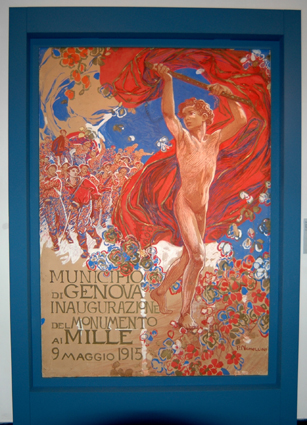Click here to view image
Garibaldi in blue de Genes
Ian Berry 2021 Genova - donazione
Berry, Ian
collage
2021 - 2021 - XXI
617
Unità di misura: cm; Altezza: 106; Larghezza: 77; Profondità: 6
tessuto
Ian Berry is a British artist who has managed to transform an everyday material like denim into a unique and recognisable art form. Born in Huddersfield, after studying art and working in advertising, he decided to devote himself completely to his artistic passion. His signature style is striking: he exclusively uses recycled jeans, jackets and other denim garments to create visually striking portraits, landscapes and urban scenes.
Over the years, Berry has gained international recognition, so much so that in 2013 he was listed by Art Business News as one of the 30 most influential artists on the contemporary scene. His works have been exhibited in prestigious museums, such as the Rijswijk Museum in the Netherlands and the Levi Strauss Museum in Germany, and one of his permanent installations can be found at the New San Fran Flower Mart in San Francisco.
Among his most fascinating creations is “Garibaldi in jeans” (2021) in denim on denim, in which the artist reworks Gerolamo Induno's famous work “Garibaldi at Marsala” from the National Museum of the Italian Risorgimento in Turin. The work was exhibited as part of the Genova Jeans project and is now kept at the Museo del Risorgimento in Genoa, where it dialogues with the historical memory of the city and the country. Artwork made using pieces of jeans depicting Giuseppe Garibaldi standing with the Italian flag waving in his hand. In the distance behind him are visible some buildings, a group of people on the beach and three sailing ships.




